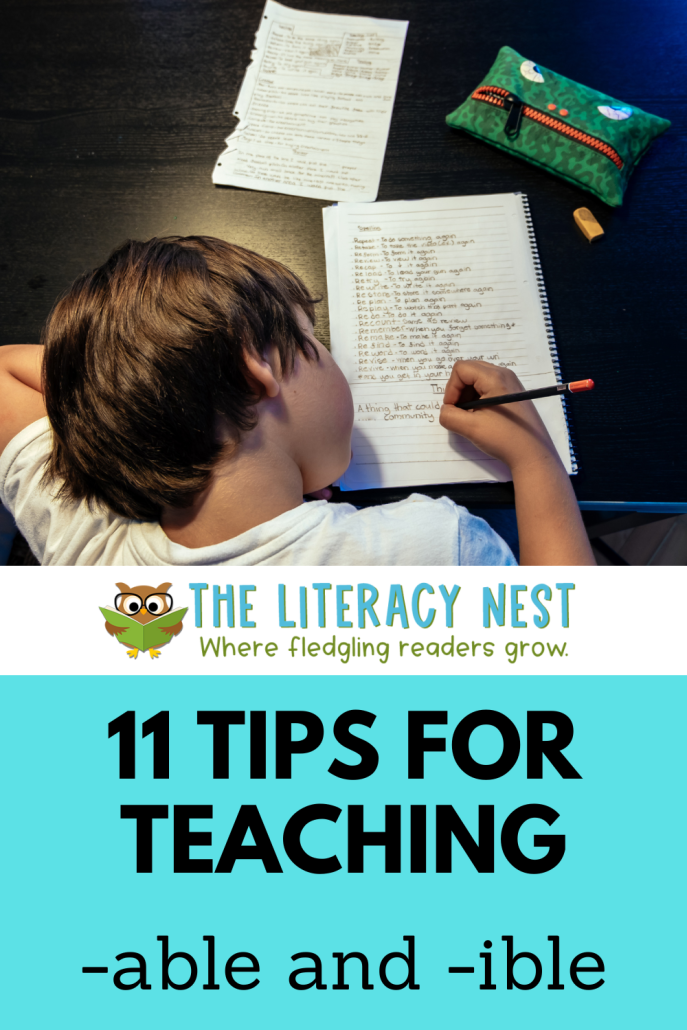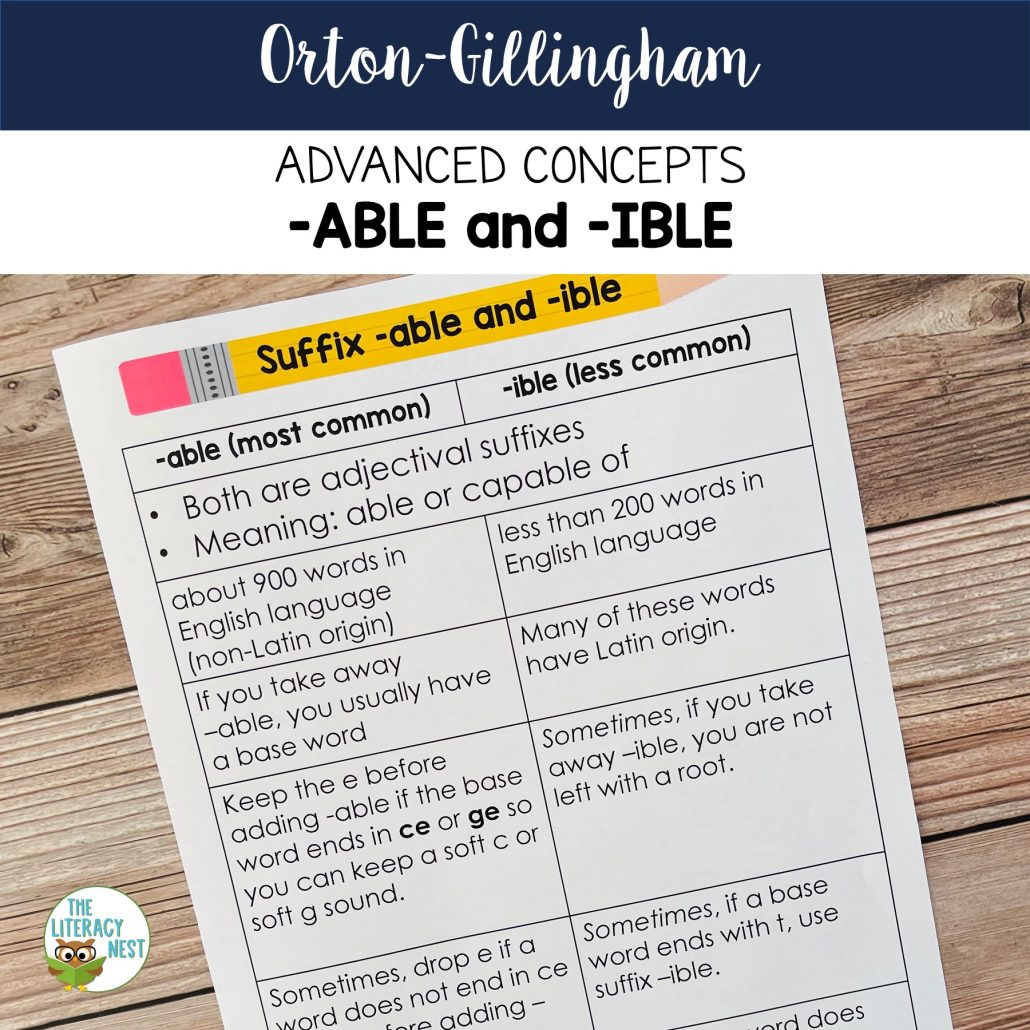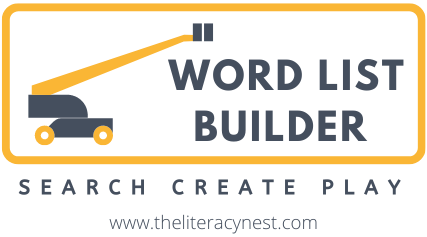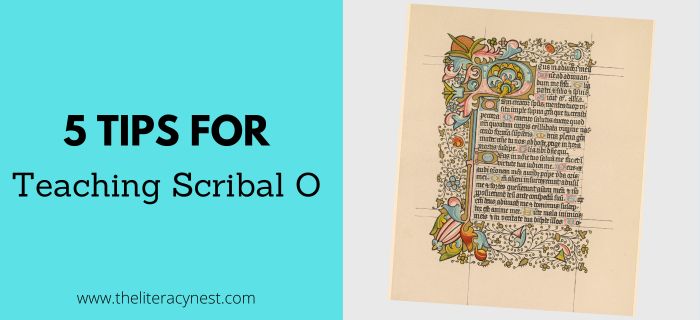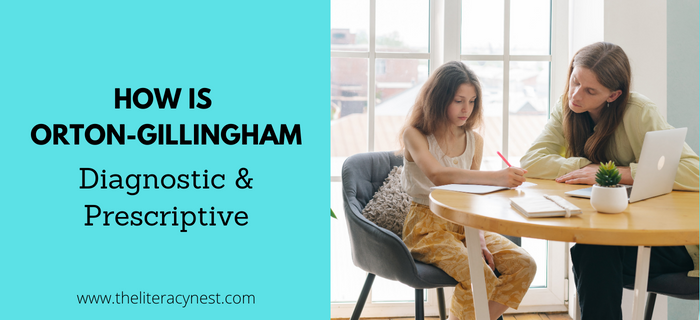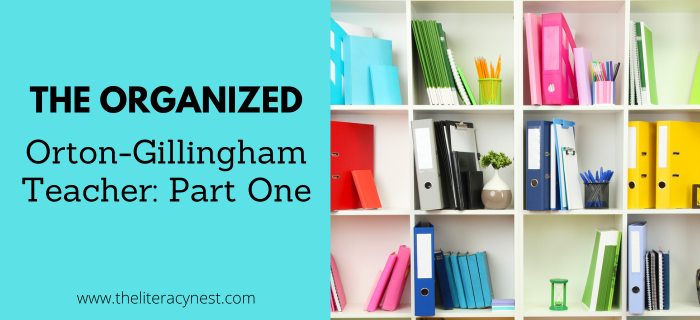11 Tips for Teaching -able and -ible
As students move on to more advanced concepts, certain spelling conventions don’t fit neatly into a clear-cut rule with a catchy turn of phrase. They are often particularly difficult for students to master. These concepts can also be challenging for teachers to explain clearly and concisely because of their complexity. In addition, unless someone has dyslexia, they likely learned some of these spellings simply through adding many words to their automatic sight word vocabulary. So, the intricacies that may be helpful to someone with dyslexia may not even be known to them. One of those challenging concepts is teaching -able and -ible.
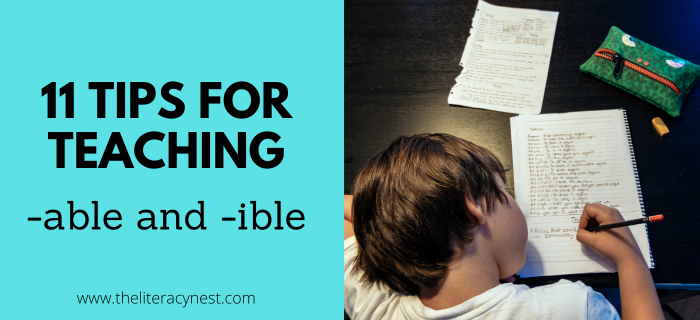
I asked a friend knowledgeable about English if he knew how to choose when to use -able and when to use -ible. His answer was memorization. For our learners with dyslexia, they need another way. I often think with my older students about how I can teach them a strategy that will still serve them well when they have graduated from tutoring and moved on to other things. One of those strategies is to teach them the guidelines to make an educated attempt AND teach them to use spell check to confirm these tricky spellings.
Looking for more practice teaching these tricky suffixes? Read Top 6 Picture Books for Teaching Affixes!
Both -able and -ible
- These are adjectival suffixes. They turn the word into a describing word.
- They both mean “able to or capable of”.
- They are both vowel suffixes.
- The suffix -able is more common. It is used in roughly 900 words while -ible is used in only about 200.
Download and print our guide to teaching -able and -ible!
Seven Tips for Teaching -able:
1. This suffix is usually used with words of non-Latin origin.
2. This suffix is used for new words such as recyclable.
3. If you remove the -able, you are usually left with a base word. For example: enjoyable, readable, drinkable
4. Sometimes you drop the e when adding -able. For example: adorable, excitable, sizable
5. If the base word ends is -ce or -ge, keep the e. For example: noticeable, manageable
6. Change y to I before adding -able. For example: enviable, pliable
7. If a word ends in -ate use -able. For example: demonstrate becomes demonstrable, and navigate becomes navigable.
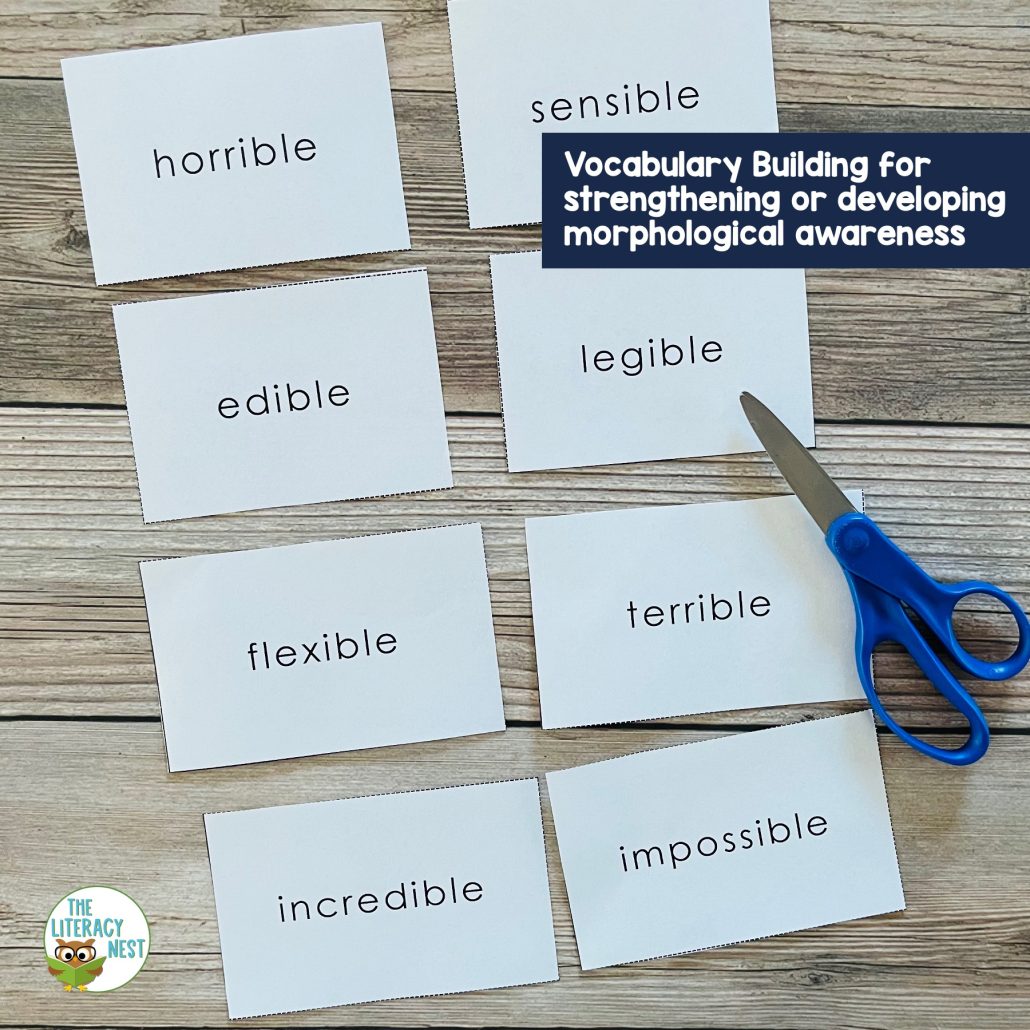
Four Tips for Teaching -ible:
1. This suffix is less common and usually used for words of Latin origin.
2. Sometimes if you take away -ible, you are not left with a complete word. However, you may be able to recognize a Latin root. For example: incredible, invisible
3. Words with soft c or g don’t need an e. For example: legible, tangible
4. Sometimes if a base word ends in t, use -ible. For example: convertible, destructible
Check out this sample morphology lesson to see how I do it!
MORE Tips for Teaching -able and -ible:
- Practice, practice, practice – Use games and hands-on activities to reinforce these spellings. The more exposures a student has, the greater the likelihood they will become mapped into long-term memory.
- Choose a list of words that students want to use in their writing and create a picture story or cartoon together. Keep this accessible for the student to refer to when writing.
- Do word sorts not just for the endings, but for other features like whether there is a complete base word. This will make the outliers more familiar.
- If all else fails, kids should know which spelling is the most common.
- Encourage students to learn to use spell check when they can to confirm spelling.
- Consider building a near-point reference with students for advanced spelling concepts with guidelines and keywords.
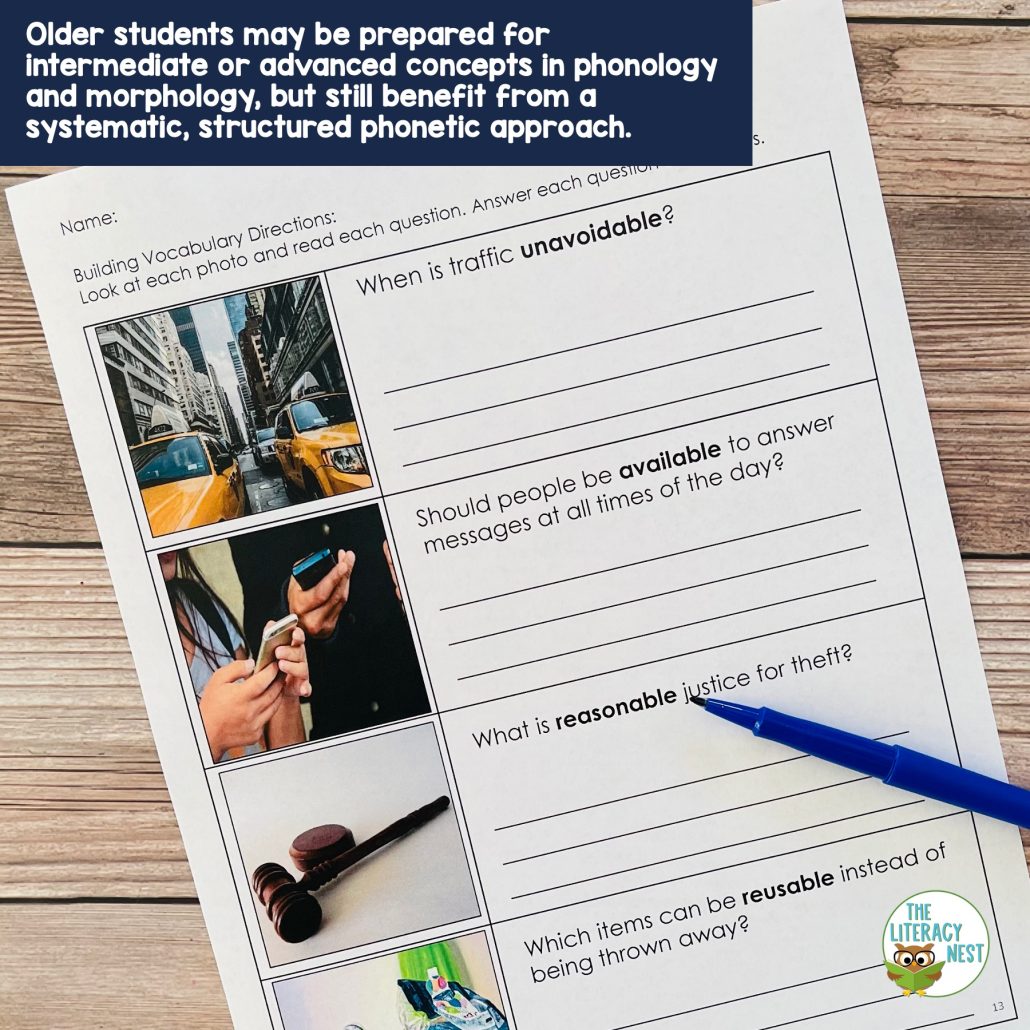
Learn more strategies for older students! Listen to season 2, episode 5, of The Together in Literacy Podcast: Word Attack Strategies for Older Students with Dyslexia!
Just as our students need a lot of practice when learning new concepts, teachers may need practice when teaching these concepts for the first time. Consider partnering with a colleague or friend to be your “guinea pig student.” This will make the teaching less clunky the first time you try it with a real live student and avoid unnecessary confusion.
Suffix -able and -ible Activities
Older students may be prepared for intermediate or advanced concepts in phonology and morphology, but still benefit from a systematic, structured phonetic approach. This resource focuses on 1-2 concepts at a time in isolation. Practice multisyllabic words, reading comprehension, and writing skills with these resources designed to bolster language development. You will notice more written practice using sentence expansion in organized templates. There are also opportunities for reading comprehension practice with the controlled passage provided.
You’ll find a variety of activities for older students who are ready to handle the challenges of advanced Orton-Gillingham concepts with -able and -ible.
You can grab this resource in The Literacy Nest Shop!
Are you looking for a list of -able and -ible words? Word List Builder has got you covered!
Save time searching for -able and -ible words! Create customized and meaningful review, build your folder of words, create templates and games, and much more in Word List Builder.
